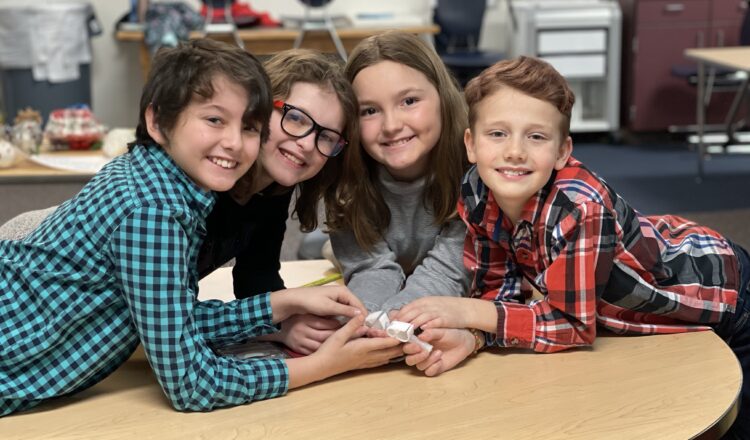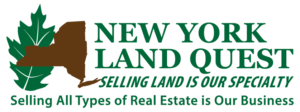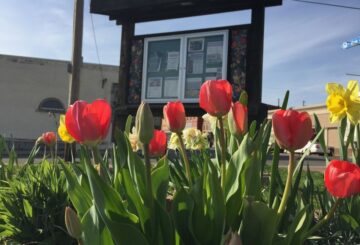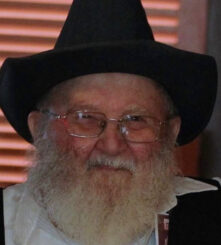From left, Wellsville 5th-graders Zia Muska, Maggie Viglietta, Adeline Brubaker and Samuel Green. Photo by John Anderson.
BY JOHN ANDERSON
A group of four Wellsville elementary school 5th-graders who care about the health and well-being of astronauts and space travelers will have their science experiment launched into space during the Mission 17 to ISS (International Space Station) this summer.
Thanks to the vision of Ross Munson (living environment teacher at Wellsville in the high school), students in other grades are getting this experience.
In Munson’s spare time, he’s worked with students on scientific projects that have been launched into space on Space X and NASA missions to the International Space Station as part of the Student Spaceflight Experiments Program.
The work of the high school students beat out thousands of projects across the nation.
Now, his knowledge has been passed on to the Wellsville Elementary School where a group of fifth-grade students are “out-of-this-world” excited to go to Florida and see their experiment go into space.
Thanks to fifth-grade teachers Stephanie Viglietta and Dan Allen starting a science club, Wellsville elementary students had their work picked to go into space over ideas from other high schools.
The students are Adeline Brubaker, Samuel Green, Zia Muska and Maggie Viglietta. Muska knew all about the International Space Station as he built one with Lego’s. The 10-year-old children talk like scientists because, well, they are!
“We are like scientists because we are studying something in outer space,” said Brubaker.
The kids came up with a very unique idea, and they thought of the stress astronauts have to go through during missions. The younger students in Wellsville study plant-based projects. As a result, they became interested in the powers of chamomile.
Without any help, the group decided to see how it would react in space and could it help astronauts and be part of life if humans are spending time on Mars or extended time in space.
The student space program gives students the ability to design and propose real microgravity experiments conducted in a weightless environment.
THE PROJECT
The project was a result of the teachers wanting students to learn outside of the classroom, and students to have that same energy toward science. The students talked about getting that opportunity and then the project.
“They had a lot of teams and there was some paperwork you could fill out to have a science project go into space, to see if it will grow, to help science,” Green said. “We went on a zoom call with Mr. Munson and he told us we won!”
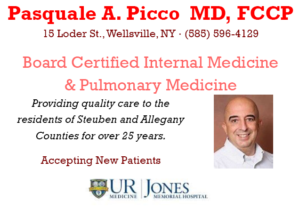
Maggie Viglietta said, “We were trying to grow germinate chamomile. We knew it grows on earth.”
But it’s so much more than that, the kids explained.
“The reason we are trying to grow it is because astronauts can get stressed in outer space and it can relieve bone cancer and menstrual pain,” Brubaker said, sounding like a fifth-year college graduate student, not a fifth-grade student. “It can help you if you are having a stressful day in outer space and it will help you go to sleep.”
Green said that the process is difficult as well because they only want results in space, not the other travel times.
“We are trying to kill it, but scientifically, we mean when it comes back down, there is a formula that preserves it and won’t disintegrate,” he said. “We will know if it grew in space and not on the way down and on the bus on the way here.”
Brubaker added, “Microgravity. We will know it grew up in space. We will be positive it grew up in space. On the bus ride there, there won’t be a camera where we can watch it 24/7. But in space, we will be able to watch it.”
Muska said this project has to take place in the garden of the International Space Station because it will be dark as well.
“We are doing it in space because it will be in the dark, pitch dark. Microgravity. Maybe it will be a habitable plant?”
Green explained, “We are trying to find out if it will grow in the dark. We know it will grow in gravity but will it grow in microgravity?”
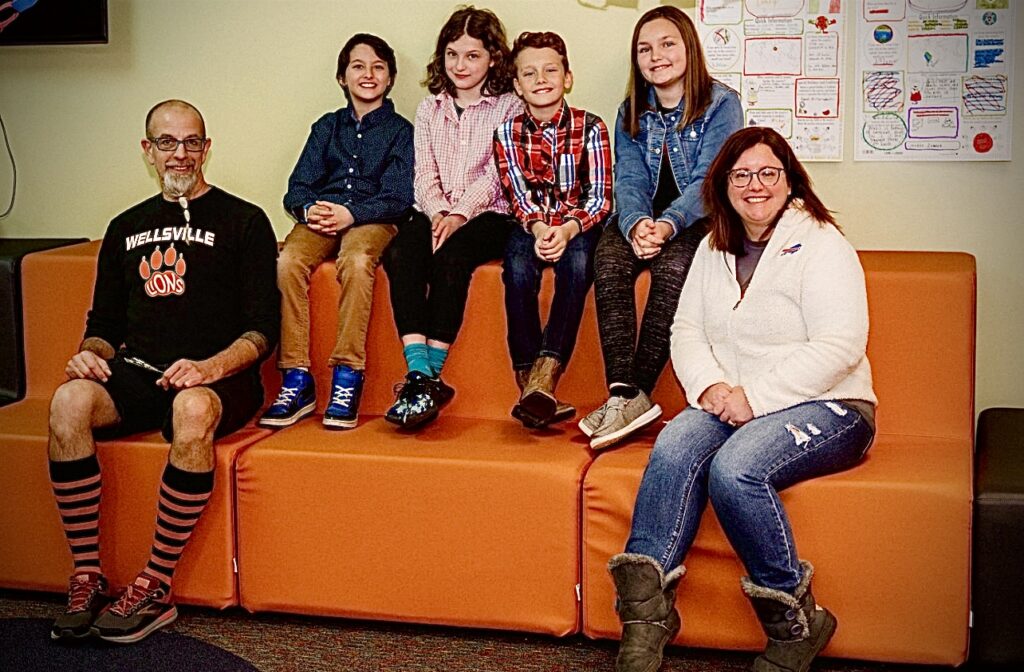
AMAZING KIDS
When the students went to class after their press conference, the teachers continued to be impressed.
“I’m amazed at how verbal they are, how excited they are,” Allen said. “We could’ve said no to this, but we thought it was good and we saw the genuine passion they have. Zia is the wordsmith of the group, we caught that early on!”
Stephanie Viglietta added, “They went against other high school teams in the Buffalo-Niagara region and they won, we didn’t expect them to win. We were looking at different things that could grow in space. They found this and went with it. And now? They are scientists. Their stuff is going to be used by NASA.”
Allen shakes his head and says, “It’s going to be amazing to see what they do when they get to high school.”
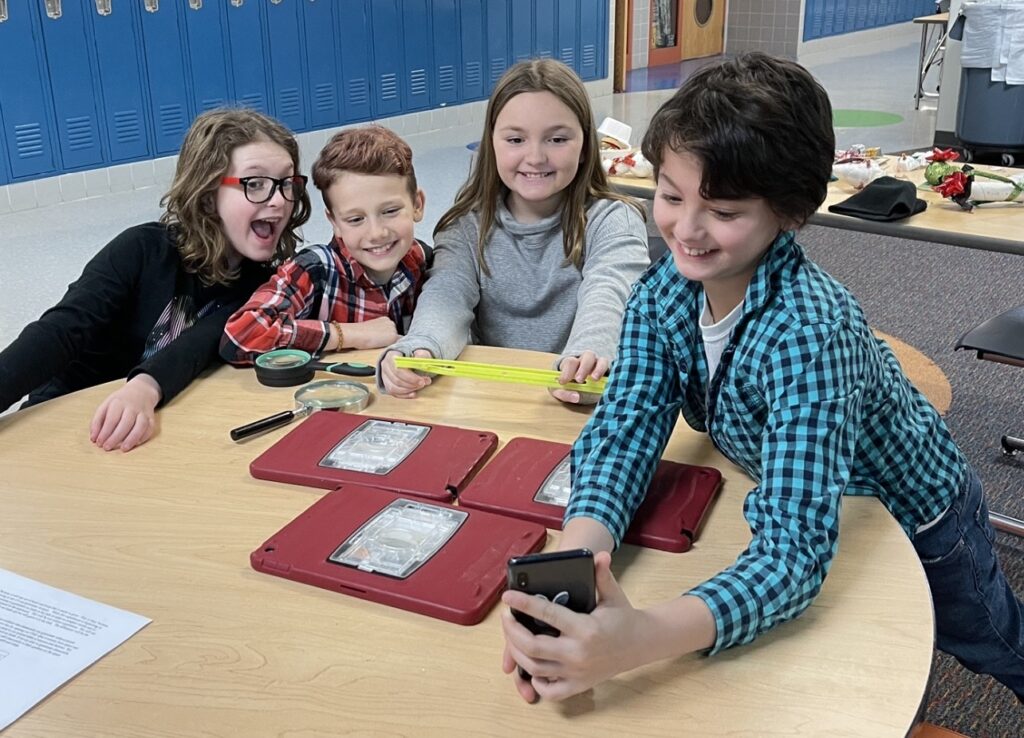
WHAT’S NEXT?
The Student Spaceflight Experiments Program announced the experiments can be modified up until March 3.
The mission will take place in the summer but Munson has their project ready.
“They finalized the experiment, prepared it and loaded it in the experimental tube, called the FME,” Munson explained. “They won’t be loading their FME until late spring, with a launch to closely follow. It is expected to be on a SpaceX rocket from Cape Canaveral Air Force Station in Florida. This is all part of Student Spaceflight Experiments Program Mission 17.
The students are correct on trying to track their experiment in one specific part of the space mission. According to the space program, the Return to Earth will take between 24 anf 60 hours. The Wellsville project will be received in Houston.
Then there is shipping and other issues to control the environment. The process includes mini labs handling shipping, using cold packs or dry ice and an inspection in advance of the harvesting report.
UPDATE ON MUNSON’S HIGH SCHOOL TEAM
The high school students Munson worked with on Mission 16 received their FME in January and Munson is working on that blood analysis.
That Wellsville team examined what microgravity will do with the resistance of the bacteria Staphylococcus epidermidis to the antibiotic amoxicillin.
Munson and the students have to analyze the blood to determine the effect weightlessness has on the relationship between the bacteria and antibiotic.
Munson has now successfully helped three groups of Wellsville students take part in the SSEP program.


